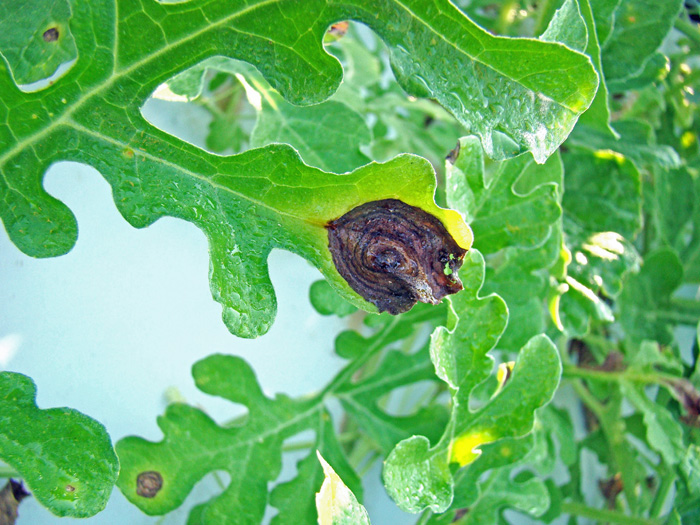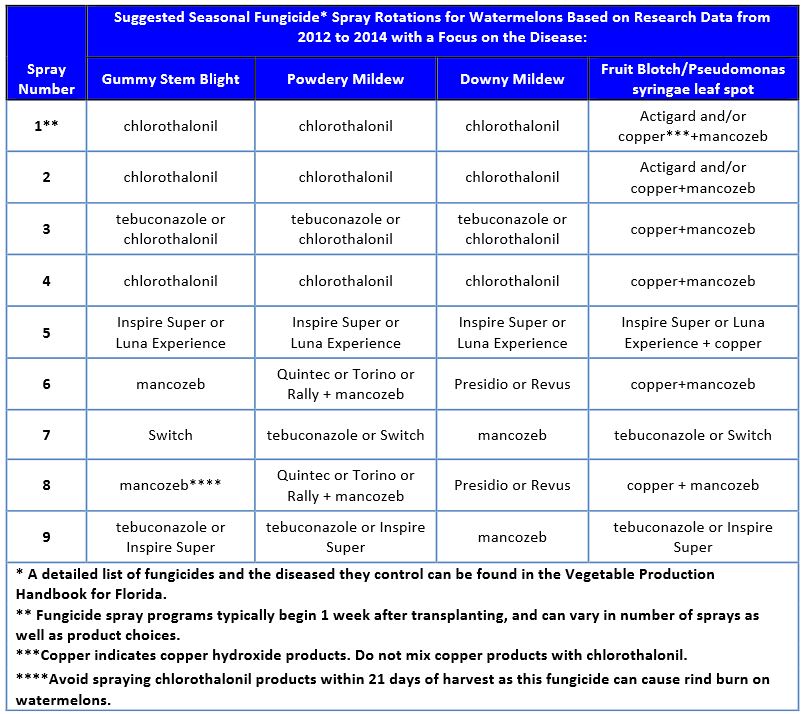 Gummy stem blight is a highly destructive, foliar fungal disease of watermelon that can cause yield losses of more than 50%. This disease is currently confirmed in multiple locations in Northwest and Northeast of Florida. Recent weather conditions of high humidity and high temperature have been ideal for gummy stem blight throughout the northern part of the state.
Gummy stem blight is a highly destructive, foliar fungal disease of watermelon that can cause yield losses of more than 50%. This disease is currently confirmed in multiple locations in Northwest and Northeast of Florida. Recent weather conditions of high humidity and high temperature have been ideal for gummy stem blight throughout the northern part of the state.
A common early-stage symptom of gummy stem blight is necrotic lesions to the margin of the leaves, which can be seen in the photo above. Additional information on advanced stage symptoms of gummy stem blight and the biology of the causal organism of the disease can be found in the publication: Management of Gummy Stem Blight (Black Rot) on Cucurbits in Florida.
For disease management, it is critical to use clean transplants, followed by use of protective and systemic fungicides in rotation, depending upon existing weather conditions, and stage of the crop. Based on research trials conducted in Florida and other southeastern states, the 2015 UF Watermelon Spray Guide was developed as a quick-use information source, which provides potential options for disease management. Information on labeled fungicides for disease management is also available in the Vegetable Production Handbook for Florida.
Links to referenced publications:
Management of Gummy Stem Blight (Black Rot) on Cucurbits in Florida
2015 UF Watermelon Spray Guide
Vegetable Production Handbook for Florida
- Mathews Paret Promoted to University of Florida Plant Pathology Department Chair - July 28, 2023
- Field Performance of Plant Protectants against Bacterial Leaf Spot on Watermelon - February 11, 2022
- Using Scouting and Diagnostic Confirmation to Improve Watermelon Spray Programs in North Florida - September 25, 2020

